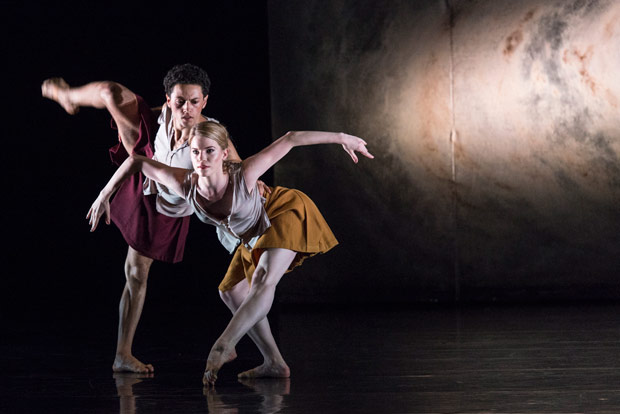
Rambert
Triptych: Subterrain, The Strange Charm of Mother Nature, Terra Incognita
London, Sadler’s Wells
18 November 2014
Gallery of Terra Incognita pictures by Foteini Christofilopoulou
www.rambert.org.uk
www.sadlerswells.com
There is a give-away clue in the collective title of this triple bill. A triptych is not just a trio but three works of art joined together as one. The implied unity of association between pieces by different choreographers appears to be a good thing on paper but I might argue that it is not so good on stage.
Each “panel” of this triptych is essentially a non-narrative work that concerns some aspect of exploration. In reverse order, there was the world premiere of Shobana Jeyasingh’s Terra Incognita, which is Latin for “unknown land” so we may assume to be overtly themed on geographical discovery; the middle work – also new, this season – was Mark Baldwin’s The Strange Charm of Mother Nature, inspired by his visit to the Large Hadron Collider at CERN and thus a danced inquiry into scientific exploration; and the opener was a reprise of last year’s Subterrain (by Ashley Page) which could represent some kind of pot-holing adventure. In any event, the common sense of exploration is confirmed by Page’s own programme note, which asserts that the work will lead “…into sometimes mysterious and uncomfortable territory.”
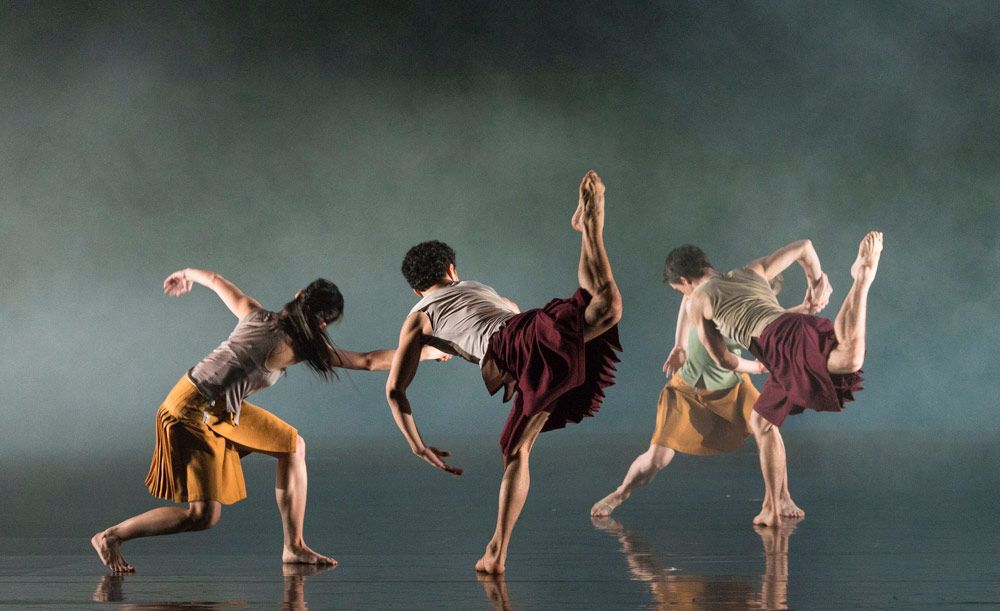
I think the whole event took us down some blind allies and I would have welcomed a left or right deviation, even if it was a wrong turn. By the end, I felt our journey of discovery had involved driving down one of those long, straight, interminable cross-American highways, with nothing but the same prairieland in view. Where was the critical theatrical ingredient of variety?
Let me be clear that each of these works would have had a much better impact in another programme, linked together in a triptych with choreography of a different style, varying the movement, musical and visual landscape in the sort of eclectic, fascinating triple bill that Rambert has so regularly produced. Each piece has significant merit but the sum of their parts is a negative. It’s all too much of a muchness.
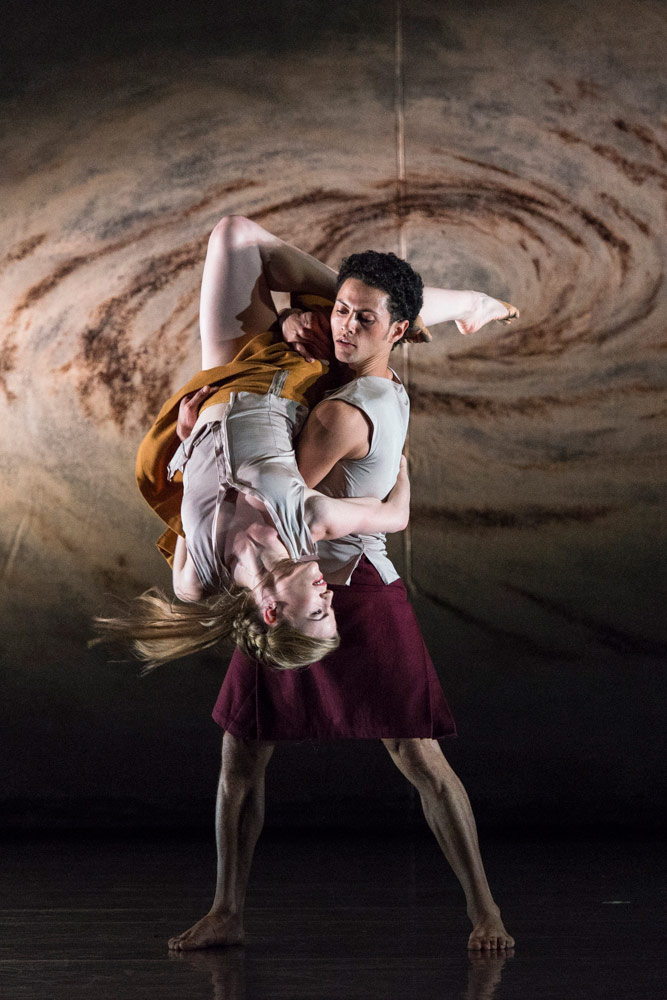
© Foteini Christofilopoulou. (Click image for larger version)
The superb Rambert dancers are athletes and gymnasts with rhythm, exuding pliable, callisthenic and loose-limbed brilliance without inhibition. Dane Hurst and Hannah Rudd are the stand-out couple across all three pieces, both dynamic and elegant; they danced with unbroken fluidity, mutual intuition and charismatic panache. Pierre Tappon, Adam Blyde and Simone Damburg Würtz also regularly caught my eye throughout the last two works.
Jeyasingh suffered by having her world premiere come last on the programme but at least she jolted us back into 2014 after having had the 1980s reprised through the preceding pieces. Terra Incognito enjoys excellent set designs (a handsome variety of interpolated panels by Jean-Marc Puissant, who also designed the costumes) and lighting (by Lucy Carter) that achieved the objective of elevating the visual appeal of choreography and design. I can’t say that I felt the same about the new and distinctly challenging score by Gabriel Prokofiev. Jeyasingh uses five couples, both genders wearing kilts, although the vague notion of androgyny was dispelled by the men and women bearing separately identifiable colours, as if in uniform.
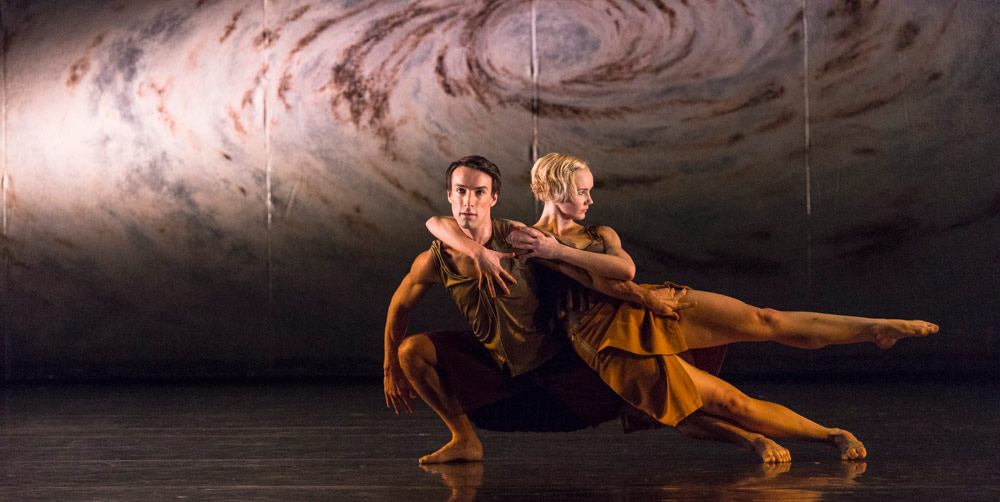
© Foteini Christofilopoulou. (Click image for larger version)
A rich variety of movement is let loose by Jeyasingh’s imagination and diverse experiences and this reaches a zenith when she has all ten dancers performing simultaneously but taking different trajectories from the same abrasive sound. It is in Jeyasingh’s language where the Hurst/Rudd combo is particularly awesome. I would have liked to see Terra Incognita with a fresh mind and not one exhausted by the two long works that went before.
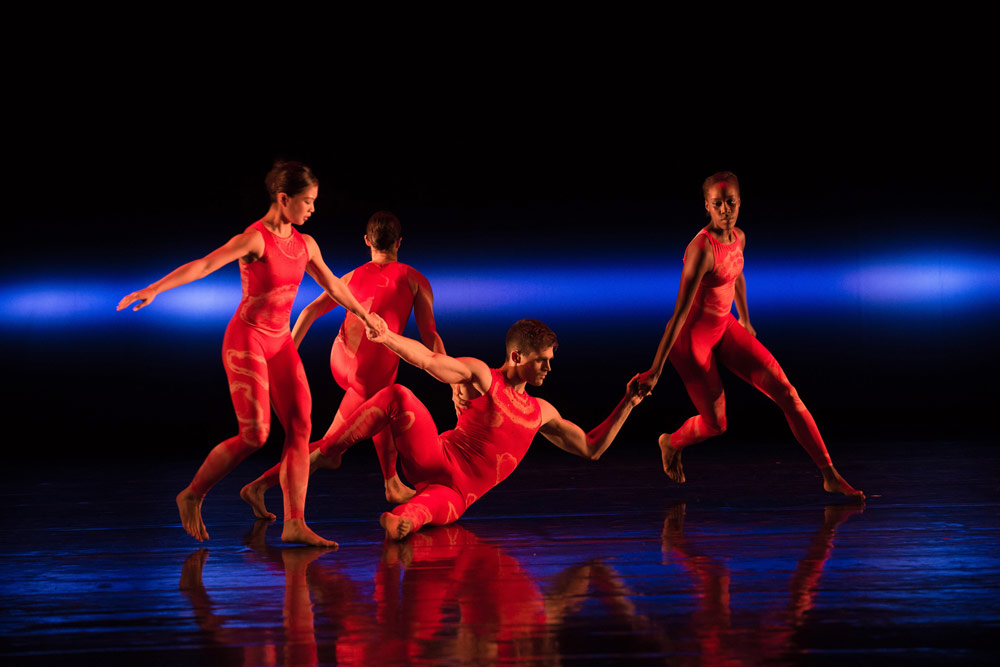
Baldwin introduces us to the quarks, not a family of distant relations to the Larkins, but the name given to the particles inside the Large Hadron Collider. He is not the first choreographer to tackle science in recent years (I think of David Bintley’s E=MC² or any number of works by Wayne McGregor) nor is it Baldwin’s own first foray (Constant Speed springs to mind). It is set to three pieces of music, which are also a triptych since Stravinsky’s Dumbarton Oaks allegedly rearranges the notes of Bach’s third Brandenburg Concerto, which follows it here, and then comes Cheryl Frances-Hoad’s Quark Dances, which apparently uses the same process. This ideal of musical deconstruction appeals but it is not something that is obvious when viewing the work.
The relevance of other elements to the activities in CERN is much more certain. The dancers change costume frequently and Stevie Stewart’s second skins of mottled and colourful unitards are an excellent metaphor to represent the flares of gamma rays that Baldwin interprets in a very Cunninghamesque way. His choreography is also full of energy, mixing slow sections with explosive busts of action. It is another work that I feel would benefit from being seen in a different context.
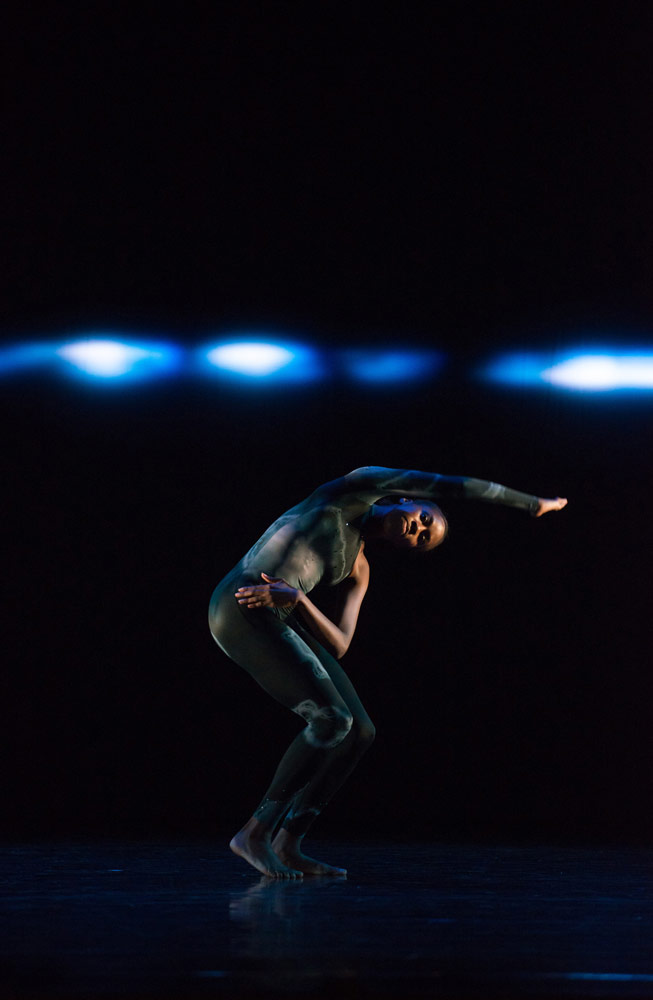
© Hugo Glendinning. (Click image for larger version)
Page’s Subterrain returns to open the autumn programme (as it did, in 2013) but it worked better as the beginning of last year’s triple bill (which continued with two works of a very different feel). This time, its length (around 40 minutes) seemed more of a hindrance. There is a profound structural similarity to Jeyasingh’s piece since Page also builds his choreography around a marathon series of duets for five couples, both consecutively and simultaneously. Like Jeyasingh, Page displays creative skill in taking his pairs in different directions to the same music whilst retaining an overall harmony in the shape of each moment. This work is dark and subterranean deep. It doesn’t gently flow over you but requires concentrated attention to absorb all the many effects and nuances, especially with sinister cameos of action lurking around the periphery.

© Chris Nash. (Click image for larger version)
I am very glad that DanceTabs is not in the business of awarding stars since it would be an impossible task to judge this complex programme in such simple terms. Each individual element would be worth more than the whole, since the downside is in programming three long non-narrative works that share common themes and are drawn from very similar edgy, modernist, neoclassical palettes of movement. Each work undoubtedly deserves a run in the Rambert repertoire but my advice would be to split them up to appear alongside other pieces that step outside the boundaries of pure non-narrative dance.














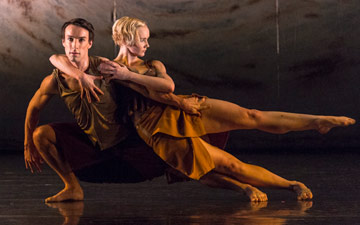
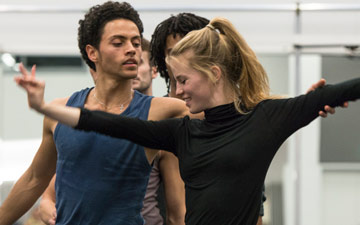

You must be logged in to post a comment.